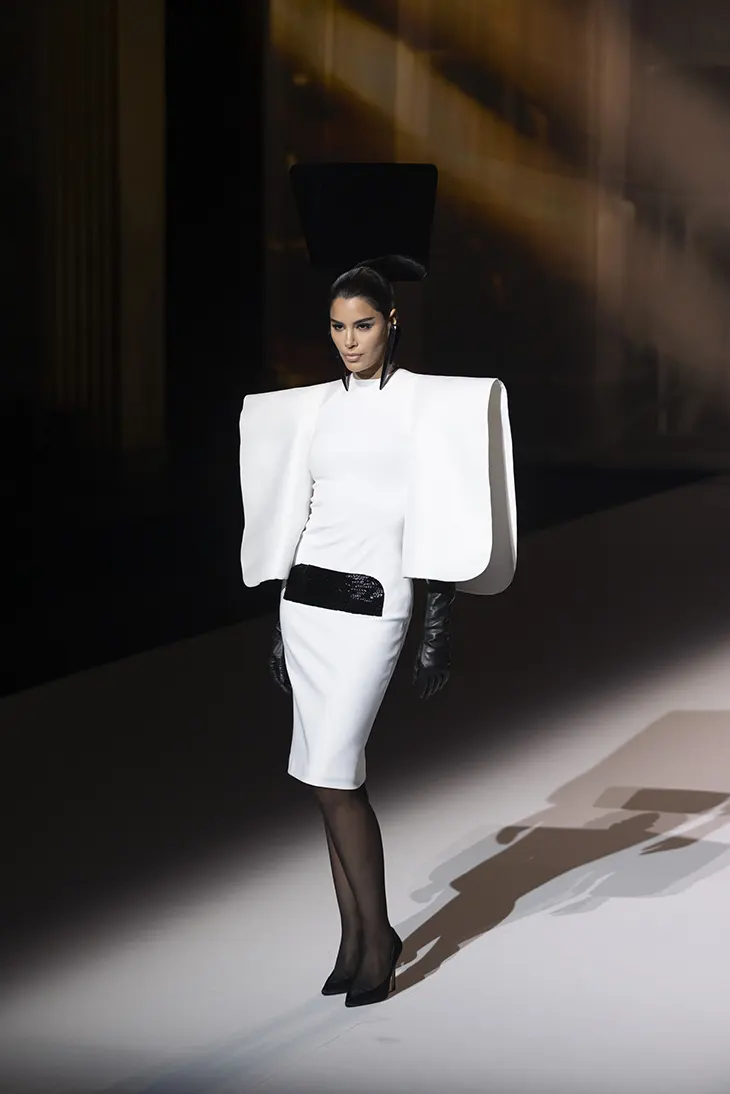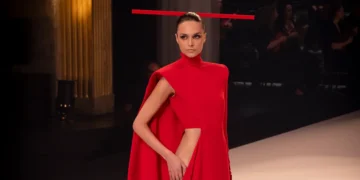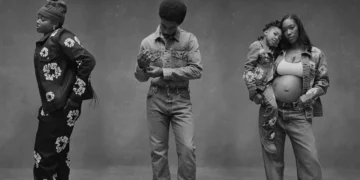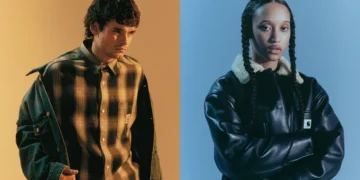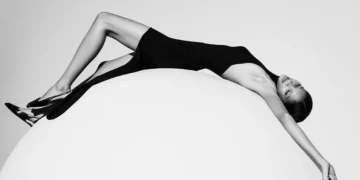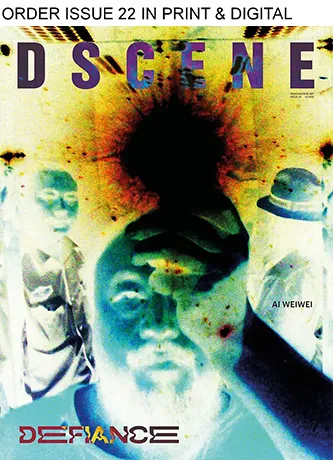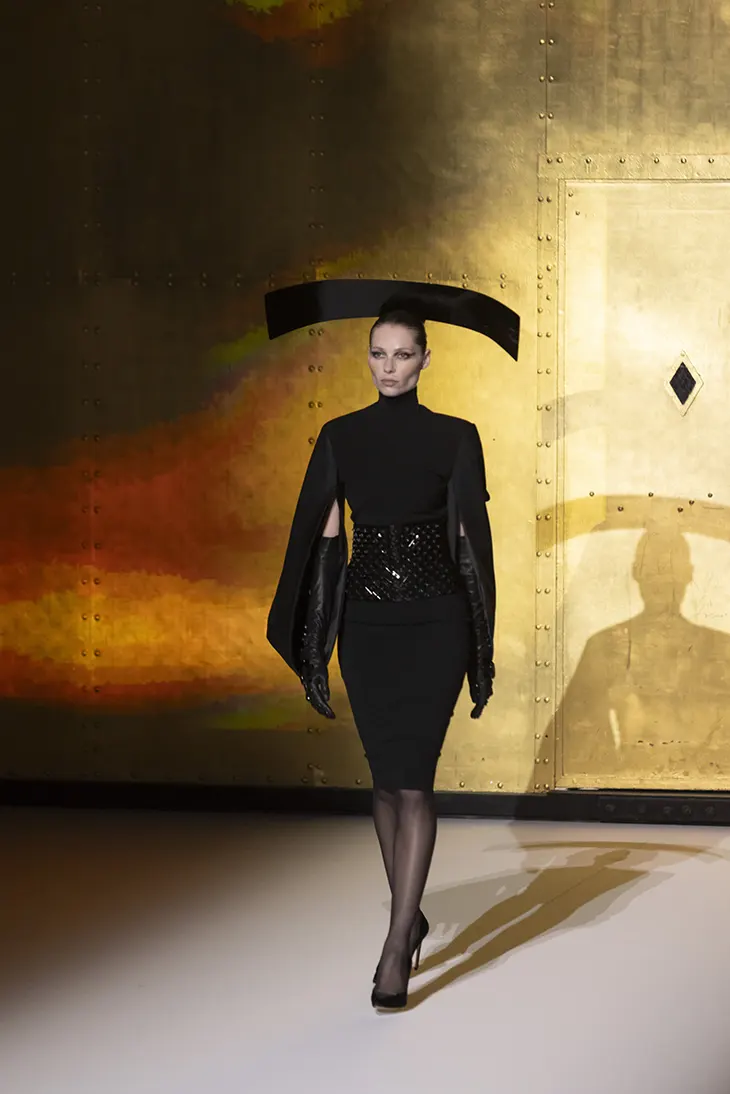
For Fall-Winter 2025.26, Stéphane Rolland stages a grand opera of couture where rhythm and reverie collide. Titled Argument, the collection draws on the imaginary encounter between composer Maurice Ravel and dancer Ida Rubinstein, whose collaboration on Boléro in 1928 birthed one of music’s most hypnotic works. Rolland transposes that same hypnotic structure into couture form, his silhouettes march to Ravel’s mechanical beat while swaying with Rubinstein’s spectral sensuality.
COUTURE COLLECTIONS
Black dominates the first act, an austere yet emotive base rendered in crepe, satin, gazar, and chiffon. Gowns curve like musical notations, their architecture often rigid, yet never static. The opening look, a black crepe dress with satin-wrapped sleeves and an organza matador belt, sets the tone: a confrontation between tension and ornament. The sculptural cubic collars and giant lapels, introduce a stark modernism that echoes both Japanese precision and early 20th-century futurism.
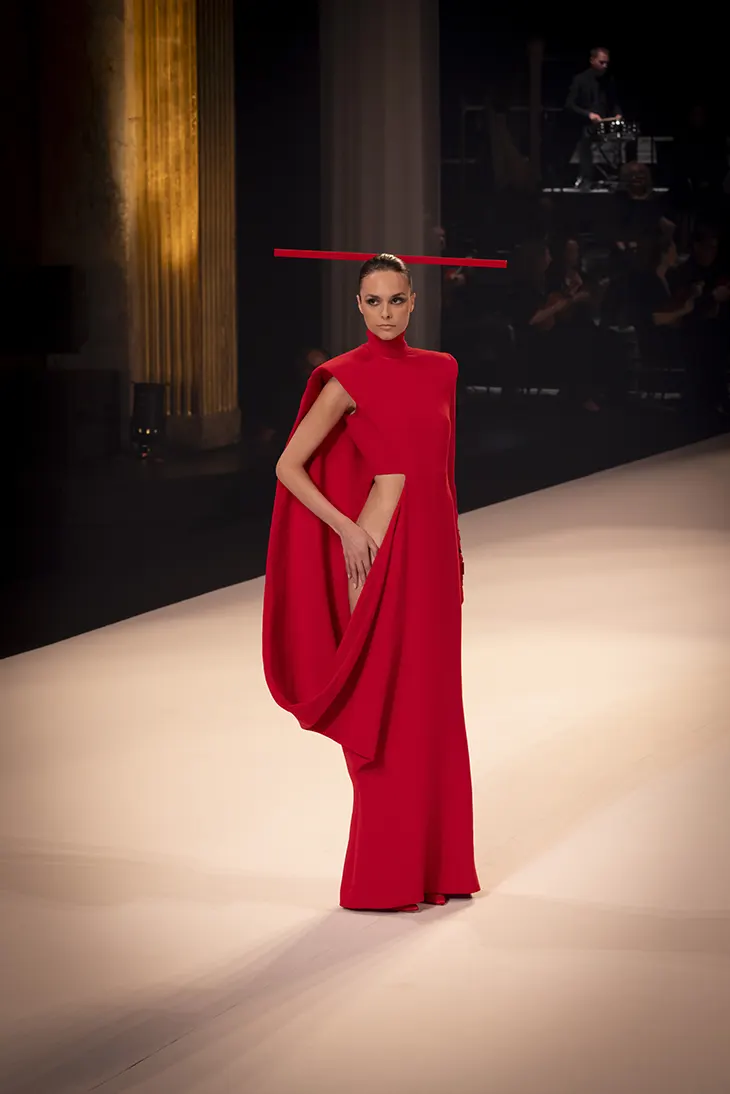
Rolland’s tuxedo dressing becomes a language of its own. From the “arch” jumpsuit to the “cubic” variations, the tailoring projects a sense of militant elegance. The palette expands momentarily to white, as seen in the disc-sleeved gazar gown and white jersey piece, but the mood remains one of control, form, and contrast.
Then, red arrives, not gradually, but like a jolt of percussion. From “Iberico-Samurai” dress embroidered with coral and crystal, to openwork crepe gown framed in a red gazar corolla, each piece channels the searing pulse of Boléro. The embroidery never overwhelms. Instead, it functions as accentuation, a syncopation of sparkle that guides the eye across the garment like a melody. Crystals, coral, and gold thread are used with a near-sacred deliberateness, turning garments into ceremonial artefacts.
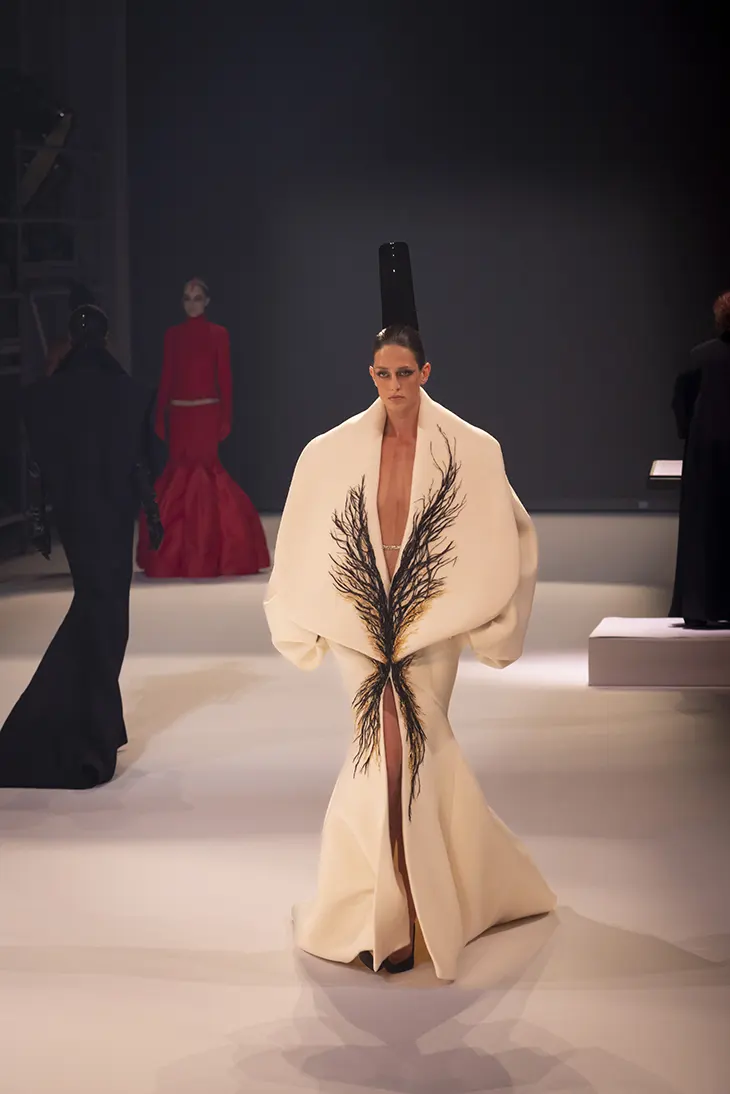
Accessories play an essential role in Rolland’s vision. Diamond “whip” brooches recall both flamenco drama and ballet flourishes. Jewelry isn’t embellishment, it’s an extension of the garment’s structure. The plastron necklace, paired with gold silicone embroidery, feels less like a necklace and more like a breastplate for a couture warrior.
The latter section of the show transitions into nude tones, chiffon pleats, and torero capes. These moments introduce softness, though never fragility. The nude samurai dress and the backless platinum caftan suggest transformation, Rubinstein’s dream tilting toward abstraction. Mini dresses, from the embroidered satin scarf silhouette to the strapless dress with a black-and-white torero cape, shrink Rolland’s grandeur into sculptural gestures, without losing intensity.
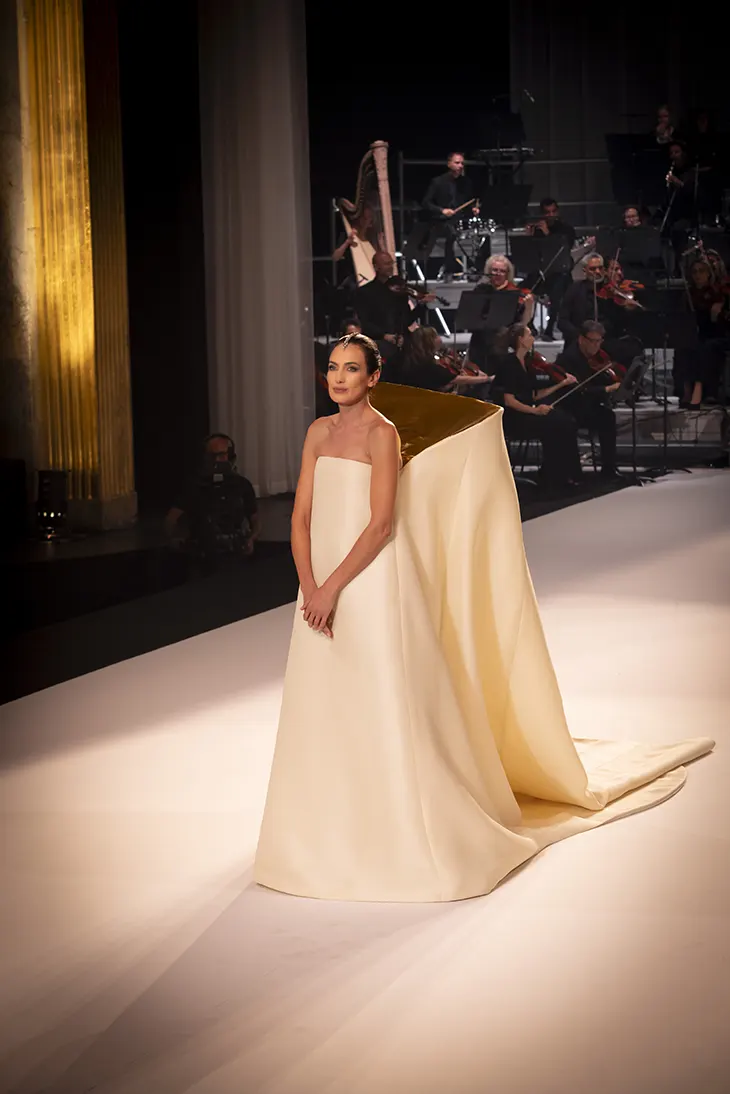
The finale look, a white gazar gown with a gold-embroidered dorsal dome appears like a couture apparition. The bride doesn’t walk. She hovers. In a collection driven by the precision of machinery and the fever of a dream, she is both conclusion and crescendo, an icon rendered in rhythm and light.
With Argument, Rolland composes a collection of architectural rigor and operatic grandeur. It does not seek to reconcile opposites. Instead, it lets them collide, machine against muse, Spain against Japan, restraint against rapture.
